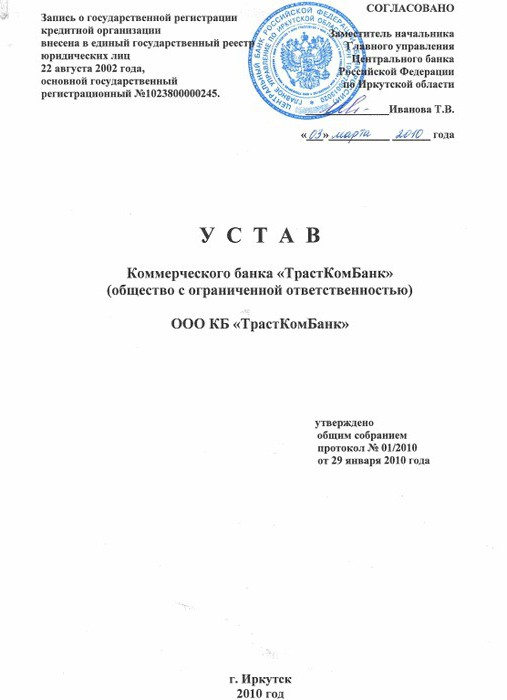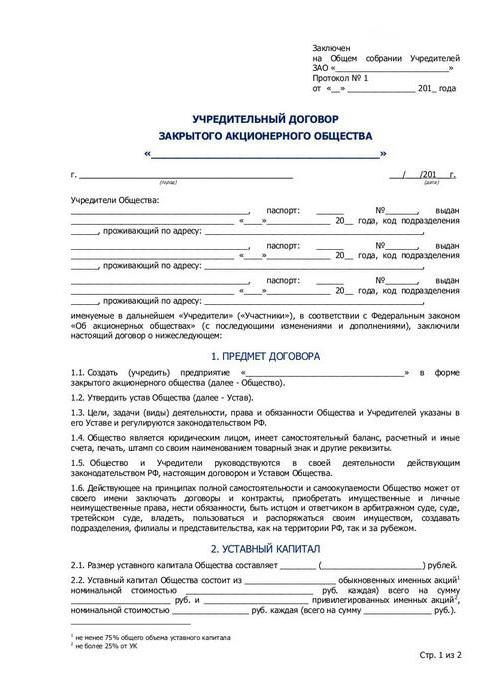Depending on the type of organization, its legal status is determined by one or another package of documents. No enterprise can exist without papers certifying the fact of its creation, the principles of its work and other significant aspects of functioning. Let us further consider what types of constituent documents exist. 
Classification
A specific package of documents for an organization is established in law. There are two main types of securities that determine the legal status of companies. So, the organization can act in accordance with the charter. It indicates the main characteristics of the enterprise, the procedure for its formation / liquidation. The charter of a legal entity also determines the rights and obligations of entities participating in the activities of the company, the rules for the formation of governing bodies, etc. In addition, an agreement may be concluded between company members. The memorandum of association specifies key aspects related to the activities of the company. In some cases established by law, a non-commercial company may function in accordance with a general provision developed for organizations of this type.
Main sections
The constituent documentation of a legal entity defines:
- Name of company.
- The address of its location.
- The order in which the company is managed.
- Other information provided by law for organizations of the appropriate type.
Founding document non-profit and unitary enterprise as well as in cases established by regulatory enactments, and other commercial companies must determine the purpose and subject of activity of the subject. They can also be provided on a voluntary basis when, by law, the entry of this information is not mandatory. 
Content of the agreement
The memorandum of association indicates the desire of participants to form an organization. In accordance with it, they undertake to create an enterprise, to determine the order of general activity. The agreement also establishes the procedure in accordance with which the property of the founders is transferred to the organization and their participation in the affairs of the legal entity is carried out. The agreement defines the rules and conditions for the distribution of losses and profits. It establishes the procedure for managing the organization, the withdrawal of its members.
Important point
Any constituent document may be amended. Correction is carried out in accordance with the procedure established by law. Changes become effective for other entities from the moment of their state registration, and in some cases - from the date of notification of the body authorized for its implementation. At the same time, organizations and their participants cannot refer to the lack of official accounting of adjustments in relation to third-party entities if the latter acted in accordance with them.
Title page
The constituent document has a first page on which its name should be indicated. It is usually written in capital letters. Also on the title page indicates the full name of the organization. Labels are printed approximately in the center of the page. In the upper right corner, it is indicated by whom and when this constituent document was approved. The bottom of the page prints the city and year of compilation. 
Internal structure
The constituent document of an LLC or other other organization should include several mandatory sections:
- General provisions.
- Block about owners / participants.
- The main tasks and activities.
- Governing bodies.
- Structure.
- Property.
- Liquidation / reorganization procedure, liability for obligations.
General Provisions
The constituent document of the LLC in the first block should contain information about the full name of the enterprise, its legal form. The general terms also indicate the short name and its English transliteration. If a company that has already been created earlier approves a new version of the document in connection with a change in the legal form or reorganization, then the first block should describe the entire history of the formation of the enterprise. The general provisions also indicate the address at which the company is located. 
Section on owners / participants
In this block, the names and legal status of the founders, their PSRN and legal addresses are mandatory. When creating an enterprise, it is necessary to take into account the provisions of the law. In particular, under Art. 88 of the Civil Code, the number of founders of an LLC cannot exceed the limit established in Art. 7, paragraph 3, Federal Law No. 14, that is, more than 50. If there are more participants, the company is subject to transformation into a production cooperative or an open company of shareholders. This procedure should be carried out during the year. The LLC also has a restriction, according to which its founder cannot be another business company, which includes one entity. Compliance with the requirements of the law is very carefully checked by the tax office.
The main activities and tasks
This section should describe the key goals for which the company was established. It also indicates the types of activities that the company will conduct. They are determined on the basis of the OKVED entered into force on January 1, 2003. 
Governing bodies
In this block, the executive structure of the enterprise and the name of the position of the entity that implements the organizational, administrative and administrative functions, with the right to carry out actions on behalf of the company without a power of attorney, must be determined. This section also establishes the procedure for his appointment or election, the terms of his authority. The company may provide for an advisory body. For example, it can be a board of trustees, etc. In this case, the section "Management Bodies" describes their powers and functions, rules of creation.
Other items
In the "Structure" section, you must specify all branches, subsidiaries, representative offices of the organization with the exact addresses, names and descriptions of the management bodies and their powers. In the block "Property" is characterized type of ownership, the rules for its use and ownership, the procedure for the distribution of profits. The last page should bear the signatures of participants and stamps. 
Registration of documents
Registration is carried out in accordance with Art. 51, paragraph 2 of the Civil Code. According to this norm, an organization is considered created from the moment of its state registration, which in practice means the date of registration of its documents. This procedure is carried out by entities defined in Art. 2 Federal Law No. 129. This law regulates the process of registration of entrepreneurs and legal entities. In addition, authorized entities are also defined in Government Decision No. 319 of May 17, 2002. These acts established that the registration of documents of organizations is carried out by the tax authority located at the address of the enterprise.
Requirements
When processing documents and their subsequent registration, it is important to comply with the basic requirements of the current legislation that apply to this area. First of all, the requirements apply to the content of securities.They must contain all the required details of the enterprise, reflect all key aspects of the activity, creation, liquidation, define obligations, rights, and responsibilities.
Documents prepared in accordance with legislative requirements and signed by the founders must be flashed. In this case, the pages should be numbered. On the back of the document, the fastening threads are fixed with a sticker. It is necessary to make a note on it: "Stitched, stitched, sealed (indicate the number) of sheets." The number is indicated both in words and in numbers. Signatures of authorized persons, founders' seals are also affixed here. In case of non-compliance with these requirements, the paper will not be accepted by the tax inspector. 
Conclusion
Thus, the constituent documentation acts as identification papers of the organization. In their absence, the enterprise cannot officially carry out its activities, conclude contracts, assume obligations, etc. The legislation establishes rather stringent requirements for the content of documents of commercial organizations. Their observance is mandatory for all business entities of this type.








